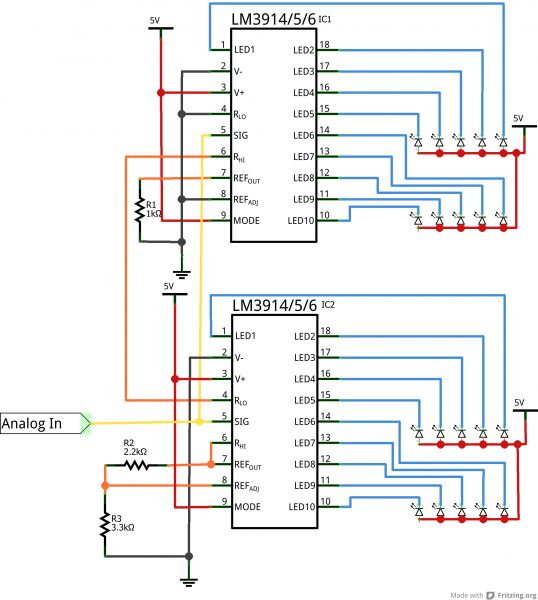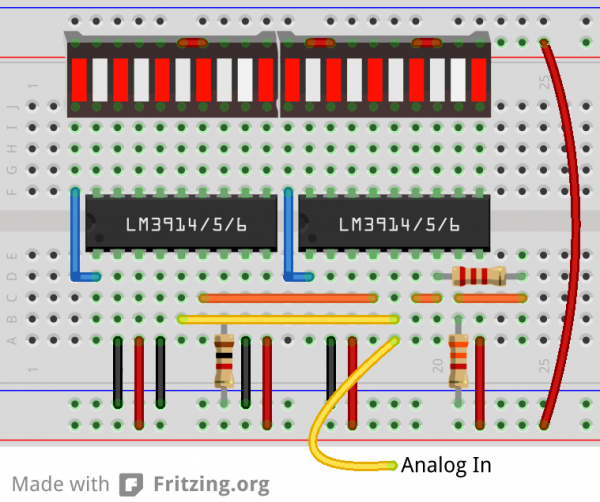Dot/Bar Display Driver Hookup Guide
Example Hookup - Cascading
By cascading these IC's you can create incredibly (almost overly) sensitive VU meters, driving 40 or even more LEDs.
Here's how you could chain two of these drivers together:
The mode pins are permanently tied to the 5V supply, which forces the displays into bar mode. A bit of extra wiring is required to get cascaded LM3914/6's into a proper dot mode. Check out the datasheet (page 11) for help with that.
In this example, we use the bar graph LEDs, which seem to be made for the LM3914/6. Make sure you connect the anodes of the LEDs to your supply voltage, and the cathode pins can be connected directly to the output pins on the driver.
The key to cascading is linking the RLO and RHI pins properly. RLO (pin 4) of the lowest IC in the chain should be connected to ground, and RHI (pin 6) of the highest IC in the chain should be connected to the maximum voltage in your sensing range. Between those two points, RHI of one IC should be connected to RLO of the next. This will chain each of those resistor strings inside the ICs together, to create a large set of highly sensitive voltage dividers inside the chips.
Following that process, you can chain even more of these ICs together to create some magnificient VU meters or other displays.


